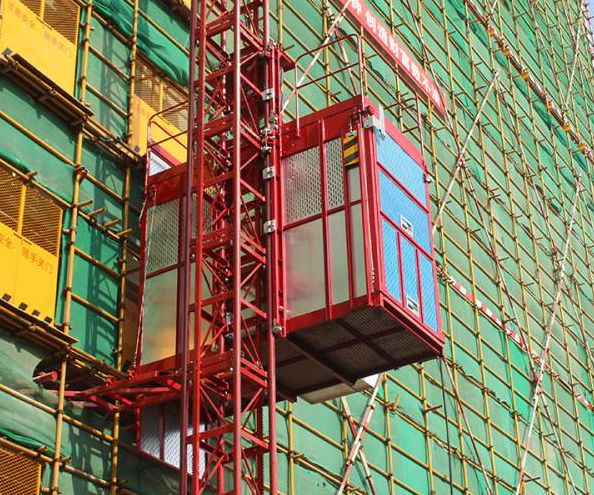Construction projects require a wide range of equipment and machinery to complete various tasks, and one of the most important types of equipment used in the construction industry is material hoists. Material hoists are devices that are used to transport materials vertically between different levels of a construction site. They are designed to be strong, durable, and reliable, and are essential in ensuring the smooth and efficient flow of materials throughout a construction project.
Material hoists come in different shapes and sizes, and can be operated using a range of power sources, including electricity, hydraulic systems, and diesel engines. They are typically made of high-strength materials such as steel and aluminum, which allows them to withstand the heavy loads that are typically transported on construction sites.
The primary function of material hoists is to transport construction materials and equipment from one level to another. This can include everything from building materials such as bricks, concrete blocks, and steel beams, to heavy machinery such as excavators, cranes, and material hoist lift. Material hoists can also be used to transport workers between different levels of a construction site, providing a safe and efficient way to move people as well as materials.

One of the key benefits of material hoists is that they can significantly increase the efficiency and productivity of a construction project. By transporting materials and equipment quickly and safely between different levels of a construction site, material hoists help to minimize downtime and reduce the need for manual labor. This not only speeds up the construction process but can also help to lower costs and improve the overall quality of the finished project.
Another important benefit of material hoists is that they can improve the safety of construction sites. By providing a safe and reliable means of transporting heavy materials and equipment, material hoists reduce the risk of accidents and injuries on construction sites. They also help to minimize the risk of damage to materials and equipment during transport, which can be costly and time-consuming to repair or replace.
When selecting a material hoist for a construction project, it is important to consider a range of factors, including the weight and size of materials that will be transported, the height and configuration of the construction site, and the specific needs and requirements of the project. It is also important to ensure that the material hoist is operated and maintained by trained professionals to ensure optimal performance and safety.
In conclusion, material hoists play a critical role in construction projects, helping to transport materials and equipment quickly and safely between different levels of a construction site. They can significantly improve the efficiency and productivity of construction projects, while also improving safety and reducing costs. By understanding the importance of material hoists in construction projects, construction professionals can make informed decisions when selecting and operating this essential equipment.
